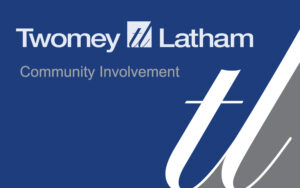The ownership of firearms by private citizens is heavily regulated in the United States with literally tens of thousands of different laws existing on the books at the Federal, State and Municipal levels. These regulations vary drastically from state to state, so it is extremely easy for the average law-abiding gun owner to become confused over the manner and type of firearms and incidental devices that are and are not prohibited from possession and/or ownership.
Confusion among New York gun owners, in particular, has been at an all time high since the passage of the New York Secure Ammunition and Firearms Enforcement Act of 2013. The “NY SAFE Act”, as it is commonly known, was passed by the New York State Legislature and signed into law by Governor Andrew Cuomo in January 2013. Governor Cuomo has described the law as “the toughest gun control law in the United States,” and he may be correct.
The NY SAFE Act (the “Act”) contains a multitude of regulations that drastically alter the preexisting laws. For instance, the Act bans the sale or transfer of so-called “assault-style weapons” (long guns with certain features like detachable magazines, pistol grips or flash suppressors), and the law also bans the ownership of “large capacity ammunition feeding devices” (magazines, clips, etc.). Notably, the Act provides a “grandfathering” provision permitting those who already owned an assault-style arm to keep it so long as the weapon was registered with the State Police within a thirteen-month grace period, or prior to April 15, 2014.
The provisions of the law related to assault weapons and large capacity ammunition feeding devices caused a significant impact to New Yorkers, since it is estimated that somewhere between 700,000 and 1,000,000 “assault-style weapons” are owned within the State. As such, this article will focus primarily on those aspects of the new law.
WHAT TYPES OF WEAPONS ARE PROHIBITED UNDER THE ACT?
The Act provides, in part, that it shall be unlawful to possess any “assault weapon” or “large capacity ammunition feeding device” except as permitted by the law.
Residents of New York who lawfully owned an “assault weapon,” as defined in the Act, prior to January 15, 2013, were required to either sell the weapon, or register it with the State Police on or before April 15, 2014. See NY Penal Law § 400.00(16-a). Registration information includes the registrant’s name, date of birth, gender, race, residential address, social security number and a description of each weapon being registered. The registry of assault weapons is confidential and not subject to public disclosure.
A person who lawfully possessed the weapon prior to January 15, 2013, and knowingly fails to register by the aforementioned deadline may be charged with a class A misdemeanor. If the omission is an unknowing failure to validly register within the period the person is liable to a warning and may be given thirty days in which to apply to register or to surrender the weapon. See NY Penal Law § 400.00(16-c).
HOW DOES NEW YORK DEFINE “ASSAULT WEAPON”?
In essence, the Act created a “one-feature test”, which was a change from the previous law enacted in 2000 that utilized a “two-feature test”. Under the old law, a weapon was barred if it possessed two or more of the enumerated features. Accordingly, the law under the Act is much more restrictive and prohibitive of the most popular types of long arms and features.
As of January 2013, the Act amended NY Penal Law § 265.00(22) to redefine “assault weapon” to include:
- A semiautomatic rifle that has an ability to accept a detachable magazine and has at least one of the following characteristics:
(i) a folding or telescoping stock;
(ii) a pistol grip that protrudes conspicuously beneath the action of the weapon;
(iii) a thumbhole stock;
(iv) a second handgrip or a protruding grip that can be held by the non-trigger hand;
(v) a bayonet mount;
(vi) a flash suppressor,
(vii) muzzle brake (note: this reads “muzzle break” as originally written and was held to be unconstitutionally vague by New York State Rifle and Pistol Ass’n, Inc. v. Cuomo, 990 F.Supp.2d 349 (W.D. N.Y. 2013), but upheld on appeal, New York State Rifle and Pistol Ass’n, Inc. v. Cuomo, 804 F.3d 242 (2d Cir. 2015) (reasoning that because the misspelled “muzzle break” has no accepted meaning, there was “no meaningful risk that a party might confuse the legislature’s intent”)).
(viii) muzzle compensator,
(ix) a threaded barrel designed to accommodate a flash suppressor, muzzle brake, or muzzle compensator (see note above at (vii) re: “muzzle break”).
(x) a grenade launcher.
- A semiautomatic shotgun that has at least one of the following characteristics:
(i) a folding or telescoping stock;
(ii) a thumbhole stock;
(iii) a second handgrip or a protruding grip that can be held by the non-trigger hand;
(iv) a fixed magazine capacity in excess of seven rounds; or
(v) an ability to accept a detachable magazine.
- A semiautomatic pistol that has an ability to accept a detachable magazine and has at least one of the following characteristics:
(i) a folding or telescoping stock;
(ii) a thumbhole stock;
(iii) a second handgrip or a protruding grip that can be held by the non-trigger hand;
(iv) the capacity to accept an ammunition magazine that attaches to the pistol outside of the pistol grip;
(v) a threaded barrel capable of accepting a barrel extender, flash suppressor, forward handgrip, or silencer;
(vi) a shroud that is attached to, or partially or completely encircles, the barrel and that permits the shooter to hold the firearm with the non-trigger hand without being burned;
(vii) a manufactured weight of 50 ounces or more when the pistol is unloaded, or
(viii) a semiautomatic version of an automatic rifle, shotgun or firearm. (Note: this provision was held to be unconstitutionally vague in New York State Rifle and Pistol Ass’n, Inc. v. Cuomo, 990 F.Supp.2d 349 (W.D. N.Y. 2013), but upheld on appeal, New York State Rifle and Pistol Ass’n, Inc. v. Cuomo, 804 F.3d 242 (2d Cir. 2015)).
WHAT IS NOT INCLUDED IN THE STATUTORY DEFINITION OF “ASSAULT WEAPON”?
The Act provides that an “assault weapon” generally does not include:
(i) any rifle, shotgun or pistol that is manually operated by bolt, pump, lever or slide action; that has been rendered permanently inoperable; or is an antique firearm as defined in 18 U.S.C. 921(a)(16),
(ii) a semiautomatic rifle that cannot accept a detachable magazine that holds more than five rounds of ammunition or a semiautomatic shotgun that cannot hold more than five rounds of ammunition in a fixed or detachable magazine,
(iii) any firearm, rifle, or shotgun manufactured at least 50 years ago, but not including replicas that have been validly registered, or
(iv) a rifle, shotgun or pistol, or a replica or a duplicate thereof, specifically exempted from the federal assault weapon ban list as such weapon was manufactured on October 1, 1993.
The Act also excludes any weapon properly registered pursuant to NY Penal Law § 400.00(16-a), which as noted above, required registration with the New York State Police on or before April 15, 2014.
WHAT ABOUT MAGAZINES AND AMMUNITION?
In addition to amending the laws prohibiting certain firearms, the Act also drastically alters the rules pertaining to “high-capacity” magazines. Designated as “large capacity ammunition feeding devices”, such devices are defined as a magazine, belt, drum, feed strip, or similar device, manufactured after September 13, 1994, that has a capacity of, or that can be readily restored or converted to accept, more than ten rounds of ammunition.[1]
Prior to the enactment of the Act, the definition excluded a large capacity magazine manufactured prior to Sept. 13, 1994. This exemption has been deleted by the Act. Quite simply, possession of a “large capacity ammunition feeding device” is an offense (criminal possession of a weapon in the third degree). See NY Penal Law § 265.02(8). However, this excludes a person who lawfully possessed a large capacity magazine that was previously exempt prior to the effective date of the SAFE Act. Such persons may be covered by the lesser penalty provision in NY Penal Law § 265.36.
A “large capacity ammunition feeding device” that was legally possessed by a person prior to the enactment of the SAFE Act may only be sold to, exchanged with or disposed of to a purchaser authorized to possess such weapons or to an individual or entity outside of the state. There are reporting requirements and deadlines respecting these transfers, as well. See NY Penal Law § 265.00(22)(h).
Of significant note, the Act also created a new offense of knowingly possessing any magazine loaded with more than seven rounds of ammunition. See NY Penal Law § 265.37. An exemption covered specified indoor or outdoor firing ranges or matches and collegiate, Olympic or target shooting competition, but under no circumstances could capacity exceed ten rounds; See NY Penal Law § 265.20(7–f). To the great relief of gun owners, this seven-round provision was held to be unconstitutional in New York State Rifle and Pistol Ass’n, Inc. v. Cuomo, 990 F.Supp.2d 349 (W.D. N.Y. 2013), and on appeal, in New York State Rifle and Pistol Ass’n, Inc. v. Cuomo, 804 F.3d 242 (2d Cir. 2015), the court agreed (concluding that New York had failed to provide evidence that a seven-round load limit would “best protect public safety”).
Other provisions of the Act regarding high capacity ammunition feeding devices, include, but are not limited to:
A person who is not authorized pursuant to law to possess a firearm and sells, exchanges, gives or disposes of a large capacity ammunition feeding device to another person is guilty of the criminal sale of a firearm in the third degree, a class D felony. A person who unlawfully manufactures, disposes of, transports or ships a large capacity ammunition feeding device is guilty of a class D felony; any person who knowingly buys, receives, disposes of, or conceals a large capacity ammunition feeding device which has been defaced for the purpose of concealment or prevention of the detection of a crime or misrepresenting the identity of such large capacity ammunition feeding device, rifle or shotgun is guilty of a class D felony.
With respect to ammunition, the Act requires ammunition dealers to conduct background checks (similar to those for gun buyers) for purchases, and bans direct internet sales of ammunition. Although online sales to New Yorkers are still legal under the Act, the buyer must go through a licensed dealer in the state and pick up the ammunition in person. This has prompted several online retailers of ammunition to avoid, or even refuse to sell ammunition to New York residents. This aspect of the law was considered by many in state government to be logistically impossible to implement. As such, in 2015, Governor Cuomo and the Senate entered into a peculiar “memorandum of understanding” suspending the ammunition portions of the Act, citing a “lack of adequate technology.” The memo states that the database “cannot be established and/or function in the manner originally intended at this time.” The memo does not formally amend the Act or have legal effect, but according to the governor’s office it provides assurances that the database will not be implemented until it is ready and tested.
WHAT ELSE DO I NEED TO KNOW?
Registration –
Each registration of an assault weapon is valid for five years. Under the Act, all registrants must recertify to the division of State Police every five years thereafter. Failure to recertify shall result in a revocation of such registration. See New York Penal Law § 400.00(16-a).
Changes of name, address, or any contact information must be submitted using an amendment form. A transfer form must be completed if the owner transfers the assault weapon out of state, to a firearms dealer, or to a law enforcement agency or officer. (The persons or entities that may legally possess the weapon; there is no provision allowing for a transfer to an immediate family member in-state). The transfer must be reported within 72 hours of completing the transfer. A transfer form also must be completed for any stolen, lost or destroyed assault weapon within the specified time frame.
Sales –
The Act implemented a universal background check provision, requiring all sellers or other transferors of firearms and ammunition to conduct background checks (through the National instant Criminal Background Check System, or NICS) of the prospective purchaser or other transferees, in “all sales, exchanges or disposals of firearms, rifles or shotguns” or ammunition, except those between immediate family members, provided that the transferring family member does not know that the transferee “is prohibited by law from possessing a firearm. The Act also requires that a prospective firearm transferor and transferee process the sale via a federally licensed dealer (FFL), but “does not mandate that FFLs play this processing role.” An FFL, who does elect to provide the service, may not charge the parties more than $10 per transaction. The seller may leave the gun with the licensed dealer, but the purchaser must appear in person to show identification and fill out an ATF Form 4473, which is retained by the FFL. Prior to the addition of this provision in the Act, private citizens could legally sell or transfer long arms within the state in a face to face transaction without having to perform a NICS background check, or prepare an ARF Form 4473.
Storage –
As part of the Act, NY Penal Law § 265.45 was added to require the owner or other custodian of a firearm to safely store the firearm when he or she “resides” with an individual who the owner-custodian knows or has reason to know is prohibited from possessing a firearm under the listed sections of federal law, ie., 18 U.S.C. 922(g)(1), (4), (8), (9). Specifically, this rule applies when the owner or custodian of the firearm resides with an individual who has been convicted of a felony, or domestic violence crime, has been involuntarily committed, or is currently under an order of protection. “Safe storage” requires the use of an “appropriate safe storage depository” (a safe or other secure container which, when locked, is incapable of being opened without the key, combination or other unlocking mechanism and is capable of preventing an unauthorized person from obtaining access), or rendering the firearm incapable of being fired by use of a gun-locking device appropriate to that weapon. A failure to comply with this requirement is a class A misdemeanor.
Loss or Theft –
Any person lawfully in possession of a firearm, or a firearm and ammunition, who suffers the loss or theft of such firearm, or ammunition and firearm, is required to report the facts and circumstances of the loss or theft to a police department or sheriff’s office within 24 hours of the discovery of the loss or theft. See NY Penal Law § 400.10(1)(a).
CONCLUSION
The above is just a small sample of the many changes and additions implemented by the Act. Beyond the substantial changes to the laws which regulate possession, ownership, sale, transfer and storage of certain arms, devices and ammunition, the Act also creates new regulations for handgun permit holders, mental health and hygiene professionals, and imposes new and stiffer penalties for violations.
Chief U.S. District Judge William M. Skretny upheld the constitutionality of the assault-weapon prohibition in 2013, and the U.S. Court of Appeals for the Second Circuit affirmed the ruling. As such, the Act is most likely here to stay, and since it imposes stiff criminal penalties (a felony in some instances) against those who violate the provisions, it is critical that law abiding gun owners take a serious responsibility to know and understand the requirements of the complex and, in some instances, convoluted new law. Remember, ignorance, or mistake of the law will never serve as a defense to any criminal violation.
For further reading:
(NY State list of some common rifles that are classified as “assault weapons” https://www.governor.ny.gov/assets/documents/RiflesthatAREclassifiedasassaultweapons.pdf)
(NY State list of some common shotguns that are classified as “assault weapons” https://www.governor.ny.gov/assets/documents/ShotgunsthatAREclassifiedasassaultweapons.pdf)
(NY State list of some common pistols classified as “assault weapons” https://www.governor.ny.gov/assets/documents/Pistolsthatareclassifiedasassaultweapons.pdf)
Frequently Asked Questions page at http://www.governor.ny.gov/nysafeact/gun-owners
[1] There is an exception for an attached tubular device designed to accept, and capable of operating only with, .22 caliber rimfire ammunition, or if it qualifies as a curio or relic. NY Penal Law § 265.00(23).





